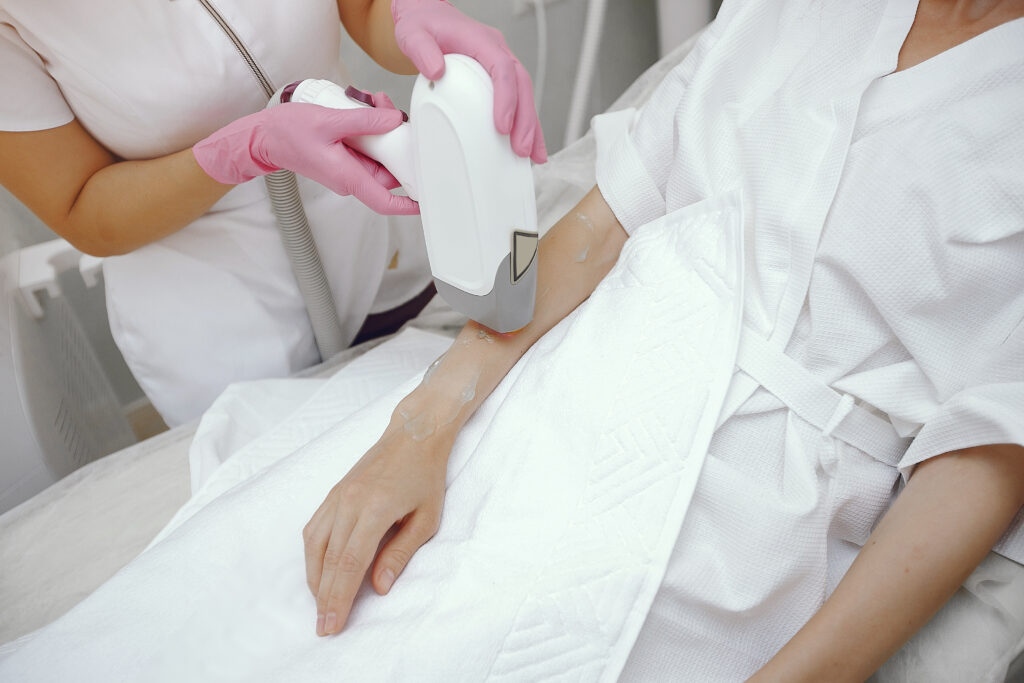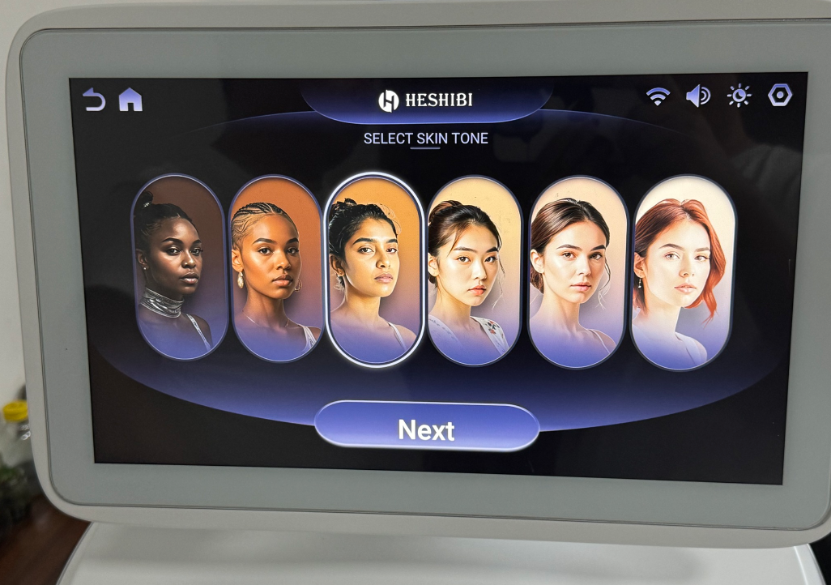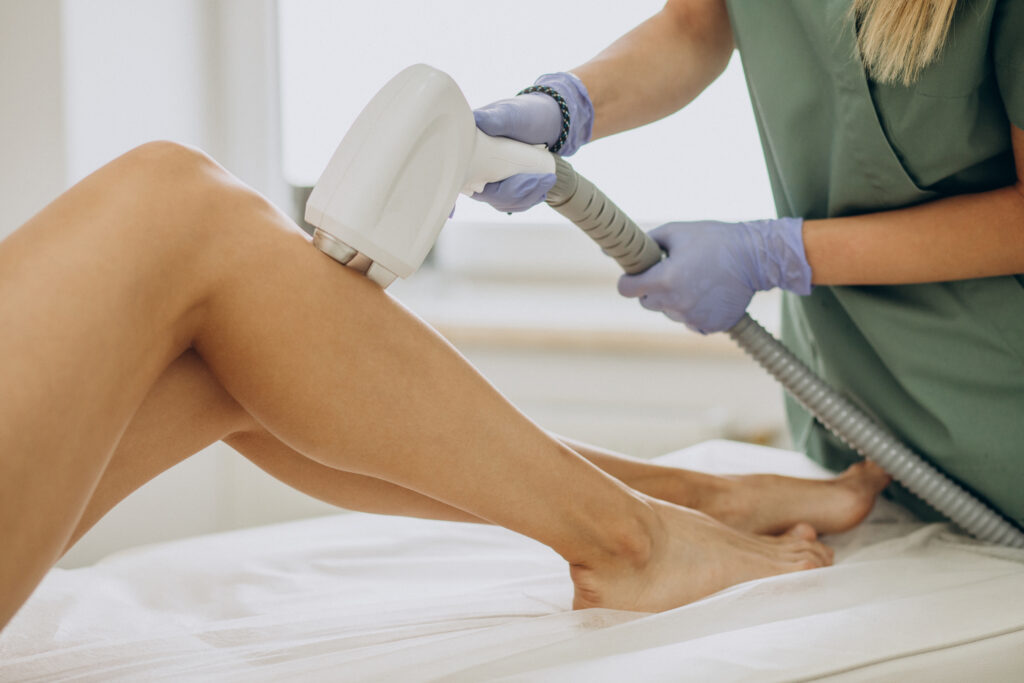As an aesthetic professional, you understand that clients demand for effective, long-term hair removal solutions is consistently high. Laser hair removal remains one of the most sought-after treatments, but clients often have pressing questions: How long does laser hair removal last? and is laser hair removal permanent?
Providing scientifically accurate answers not only builds client trust but also reinforces your clinic’s position as an industry authority. This guide will review the clinical principles behind the longevity of laser hair removal and explain how advanced technology can empower your practice to deliver superior, lasting results.
Table of Contents
ToggleCore Clinical Concept: Educating Clients on “Permanent Hair Reduction”
A foundational element of any client consultation is managing expectations. The U.S. Food and Drug Administration (FDA) provides precise terminology that is crucial for professionals: “permanent hair reduction.”[1]
This term is defined as the long-term, stable reduction in the number of hairs regrowing after a full treatment course. It is not a guarantee of 100% hair elimination. Educating your clients on this distinction from the outset prevents future dissatisfaction and establishes a transparent, professional relationship. Explaining that hair can grow back after laser hair removal, but will typically be finer, lighter, and far less dense, sets a realistic and achievable treatment goal.
The Scientific Basis for Long-Term Efficacy
The clinical success of laser hair removal is grounded in two core scientific principles that every practitioner should master.
1. The Principle of Selective Photothermolysis
Laser hair removal operates on the principle of selective photothermolysis. The laser emits a specific wavelength of light that is preferentially absorbed by the melanin within the hair shaft. This light energy converts to thermal energy, which is conducted to the hair follicle’s proliferative centers—the bulb and bulge. The objective is to induce sufficient thermal necrosis in these structures to inhibit future hair growth while minimizing thermal damage to the surrounding epidermis. This process is most efficient with a high melanin gradient between the hair and skin.
2. The Critical Role of the Hair Growth Cycle
The necessity for multiple treatment sessions is dictated by the hair growth cycle, which consists of three phases: anagen (growth), catagen (transition), and telogen (rest). Laser energy is only effective when the hair is in the anagen phase, as the hair shaft is firmly connected to the follicle, providing a direct conduit for heat. At any time, only a fraction of a person’s hair is in this active phase. Therefore, a series of treatments spaced weeks apart is clinically necessary to target successive cohorts of follicles as they enter the anagen stage.
Factors Influencing Clinical Outcomes
The longevity and success of a treatment course are determined by a combination of patient-specific variables and the technical parameters of the treatment.
1. Patient Assessment
- Skin and Hair Type (Fitzpatrick Scale[2]): The ideal candidate presents with light skin (Fitzpatrick I-IV) and dark, coarse hair, which allows for maximal energy absorption by the target chromophore (melanin) with minimal risk to the epidermis.
- Hormonal Conditions: Underlying endocrine disorders such as Polycystic Ovary Syndrome (PCOS) or hirsutism can drive the growth of new hair from previously dormant follicles. While laser treatment is still highly effective for these patients, they must be counseled on the potential need for more frequent or ongoing maintenance sessions to manage hormonally-driven growth.
2. Treatment Parameters
- Laser Technology: The choice of laser is critical for optimizing safety and efficacy across diverse patient populations. While Alexandrite and Nd:YAG lasers have their place, Diode lasers are widely recognized for their exceptional versatility.[3] Offering a range of wavelengths, diode systems provide a strong clinical balance, enabling deep follicular penetration and safe, effective treatments for a broad spectrum of skin types (Fitzpatrick I-V).
- Practitioner Expertise: The skill of the certified practitioner is arguably the most critical factor. Proper parameter selection (fluence, pulse duration, and spot size) and the identification of correct clinical endpoints (e.g., perifollicular edema) are essential for maximizing efficacy while ensuring patient safety.
Best Practices for Maximizing and Extending Client Results
To position your clinic as a center for excellence, implement a protocol that maximizes and extends treatment results:
- Offer Advanced Technology: Utilize clinically proven, certified equipment that can be tailored to individual client needs.
- Enforce a Full Treatment Course: Educate clients that completing the full, recommended course of 6-8 sessions is non-negotiable for achieving significant hair reduction.
- Maintain a Strict Treatment Schedule: Adhere to clinically recommended intervals (e.g., 4-6 weeks for facial areas, 6-8 weeks for the body) to effectively target hair in the anagen phase.
- Provide Clear Pre- and Post-Care Protocols: Instruct clients to avoid sun exposure, tanning, and follicle-disrupting hair removal methods (plucking, waxing) for 4-6 weeks pre-treatment. Post-treatment care should emphasize sun protection and gentle skin care.
- Develop a Long-Term Maintenance Plan: Advise clients that an annual maintenance session is often recommended to address any residual fine hairs or new growth, ensuring long-term satisfaction.
Empower Your Practice with Heshibi’s Advanced Diode Laser Technology
Investing in the right technology is critical for expanding your client base, improving efficiency, and delivering the highest standard of care. Heshibi offers a portfolio of CE & FDA-certified diode laser systems designed to meet the demands of the modern aesthetic practice.
Our platforms, including the DioFlex, DioGemini, and DioTreasure, are engineered for superior performance and versatility. Key features that provide a clinical and business advantage include:
- Multi-Wavelength Capability (755/808/940/1064nm): This allows you to safely and effectively treat the widest range of skin types—from the fairest to the darkest—and target everything from fine, light hair (755nm) to deep, coarse follicles (1064nm). This versatility allows you to expand your patient demographic significantly.
- Variable & Dual Spot Sizes: The DioFlex offers interchangeable spot sizes, while the DioGemini features dual handpieces. This flexibility allows for rapid treatment of large areas like the back and legs, and precise work on smaller, delicate zones. This drastically reduces treatment times, increasing client throughput and revenue.
- High Power and Advanced Cooling: With machine power up to 3000W and a robust compressor cooling system, our devices deliver high-fluence energy for maximum efficacy while ensuring patient comfort and epidermal protection. The cooling system allows for continuous, reliable operation throughout a busy clinical day.
Conclusion
How long does laser hair removal last? For a well-treated client, the results are significant, long-term, and can last for years. It represents a powerful solution for patients and a cornerstone service for any successful aesthetic practice.
The longevity of these results is a direct reflection of clinical expertise, proper patient education, and the quality of the technology employed. By integrating an advanced, versatile laser system from Heshibi into your practice, you can confidently meet client expectations, deliver superior outcomes across a diverse population, and secure a strong return on your investment.
References
[1] https://en.wikipedia.org/wiki/Laser_hair_removal
[2] https://en.wikipedia.org/wiki/Fitzpatrick_scale
[3] https://pubmed.ncbi.nlm.nih.gov/35634805/




